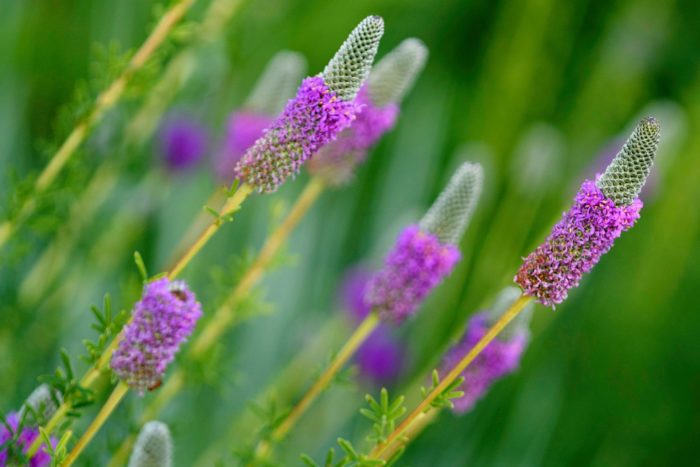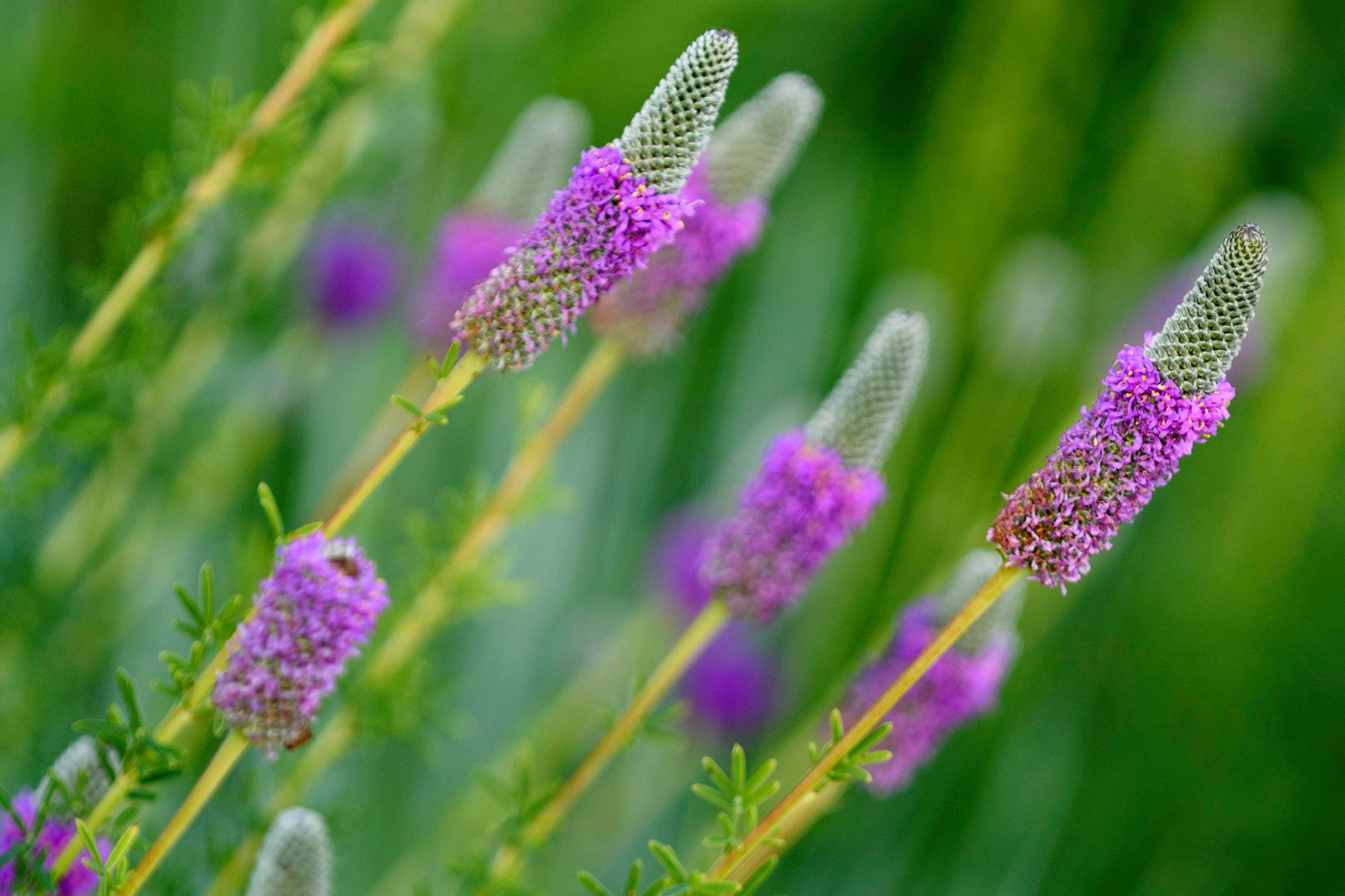Whereas some summer wildflowers are difficult to distinguish from one another, you can’t mistake purple prairie clover (Dalea purpurea) for anything else when it’s blooming. Beginning in June or early July, tiny purple flowers “bloom together as a flowery wreath” at the bottom of a cone-shaped spike, moving upward as the weeks pass. Sometimes known as violet prairie clover, this plant is native to much of the U.S. and Canada, except for states along the west and east coasts.
Many kinds of pollinators are attracted to purple prairie clover. The Minnesota Wildflowers website says the species “does well in a sunny home garden in average to dry soil.” The Illinois Wildflowers website notes, “The soil can contain significant amounts of loam, clay, sand, or gravel – this plant is rather indifferent to the characteristics of the soil, to which it adds nitrogen. Foliar disease is not troublesome. Purple Prairie Clover is slow to develop, but is fairly easy to manage if the site is well-drained and there is plenty of sun.”
Fun fact I hope no Bleeding Heartland readers will ever need to know: according to the USDA’s Natural Resources Conservation Service, “Tea can be made from vigorous taproot to reduce fever in measles victims. This plant is highly palatable and nutritious.”
I took this photograph of purple prairie clover near the beginning of the blooming period.
On the left in this shot, you can see one of my favorites, tall cinquefoil.
Wendie Schneider took the next eight pictures last year in Story County.
The last of Wendie’s pictures shows what these plants look like after the flowers have gone. The Minnesota Wildflowers site notes, “Fruit is a dry, hairless seed that remains in the calyx until dislodged by a strong enough wind or by critters.”
Finally, courtesy of Patrick Swanson, two closer looks at insect sampling small purple prairie clover flowers last month in Harrison County.














1 Comment
Thanks for including so many insects in the your wildflower photos...
…they are fun to see. And they also demonstrate that wildflowers, especially native ones, help birds by hosting the insects that are essential to the survival of almost all bird babies.
Purple prairie clover seed is fun and easy to collect, compared to the seed of some other prairie flowers. A close relative, white prairie clover, produces similar-looking seedheads, but the two species can still be told apart in autumn because the seedheads of white prairie clover are harder, rougher and darker.
PrairieFan Thu 16 Aug 3:09 PM